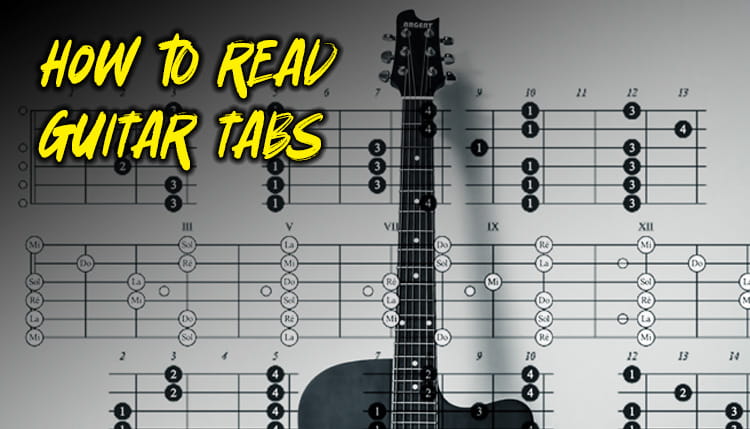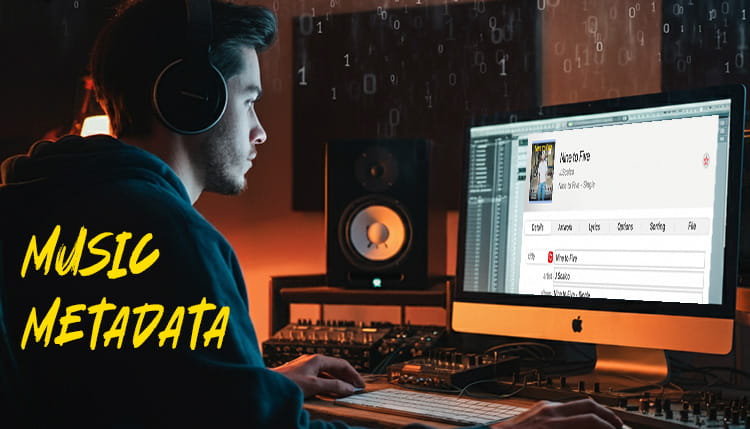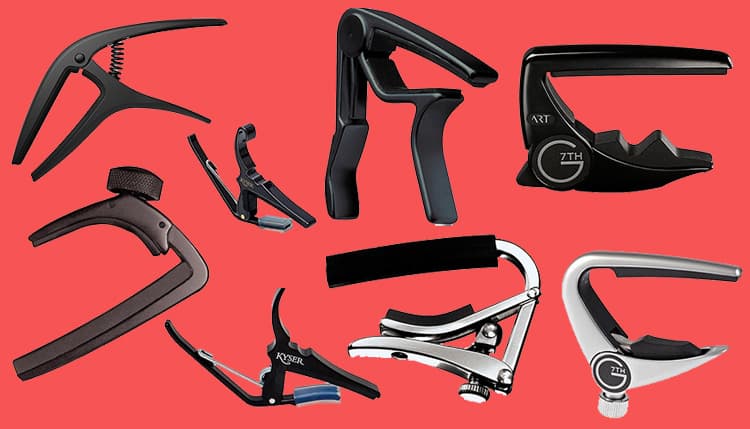Learn how to read guitar tabs with our friendly guide! Perfect for beginners eager to decode their favorite songs.
What Are Guitar Tabs?
Definition of Guitar Tablature
Guitar tablature, lovingly known as “guitar tabs,” is a no-nonsense way of reading music crafted for instruments with frets, like our beloved guitar.
It’s a handy tool for those of us who just want to jam without diving headfirst into complex music theory.
Rather than those intimidating dots and lines you see in classical sheet music, guitar tabs map out the guitar’s fingerboard directly, showing exactly where to plant your fingers to make sweet music.
Brief History and Purpose of Tabs
Think guitar tabs are a new thing? Think again!
They’ve got roots going all the way back to those lute-playing folks in the Renaissance.
Fast forward to the 20th century—tabs became a favorite because who doesn’t love a shortcut?
They’re a wonderful bridge over the gap between written music and straight-up rocking out.
For those who dream of shredding like a pro or playing without burying their noses in music textbooks, tabs provide a more laid-back approach to learning.
Comparison to Standard Musical Notation
Here’s the scoop: standard musical notation uses a five-line staff to represent pitch and rhythm, which can be a brain-bender if you don’t have a background in reading music.
Guitar tabs, on the other hand, lay out six lines that mirror the strings of the guitar. Numbers on these lines tell you which fret to hit.
If you see a “0,” strum the string open; if there’s a “3,” put your finger on the third fret.
It’s as simple as reading left to right, playing each note in sequence.
This straightforward system helps rookies locate notes on the guitar with ease and precision.
| Standard Notation | Guitar Tabs |
|---|---|
| Uses a five-line staff | Uses six lines for strings |
| Indicates pitch and rhythm | Shows fret and string spots |
| Needs music theory smarts | Relies on visual fretboard map |
Advantages of Using Tabs for Beginners
- Visual Experience: Tabs serve up a direct view of the guitar’s fingerboard, so it’s easy for beginners to figure out where to put their fingers. Whether you’re picking out a simple tune or learning scales and chords, it’s all about spotting familiar shapes and patterns.
- Ease of Learning: Toss intricate music theory out the window. With tabs, there’s no need to memorize note values or pitches. Just follow the numbers like a treasure map, and you’re playing music in no time.
- Accessibility: Got a song in mind? Tabs make it super easy to jump right in and start playing. They offer straightforward guidance on finger placement, helping you play your favorite songs faster than you’d expect.
- Chord Identification: Tabs are a lifesaver when it comes to spotting chords. Numbers are stacked up to show which strings to strum together, making it simpler to recognize chords. Pair this with chord charts, and you’ve got all you need to stick a song together.
Grabbing hold of guitar tabs is like unlocking a door to music heaven for beginners.
It’s a visual, approachable way to learn, allowing you to get those tunes flowing without sweating the small stuff.
Understanding the Basics of Tab Notation
Let’s talk guitar! Learning how to read guitar tabs is pretty much your first step to becoming a rockstar on that axe.
Tabs, or tablatures as the fancy folks call ’em, show us exactly where our fingers should land on that fretboard.
Get ready for a no-sweat guide on deciphering tab notation.
The Six Lines Representing Guitar Strings
Guitar tabs have six lines. Think of each one as a sweet little string on your guitar, going from top to bottom.
The top line is our high-pitched friend—high E—the tiniest string; at the bottom, we’ve got the beefy low E string.
This setup mirrors what you see when you’re holding the guitar.
| Line | String |
|---|---|
| Top line | High E (1st string) |
| 2nd line | B (2nd string) |
| 3rd line | G (3rd string) |
| 4th line | D (4th string) |
| 5th line | A (5th string) |
| Bottom line | Low E (6th string) |
Numbers and Their Meaning on the Fretboard
Now, about those numbers on the lines—they tell you which frets to work your magic on.
So, a “3” on the second line (B string) means press the 3rd fret. Easy, right?
Here’s a little doodle:
E|---0---1---2---3---|
B|---1---2---3---4---|
G|---0---1---2---3---|
D|---2---3---4---5---|
A|---3---4---5---6---|
E|---0---1---2---3---|
In plain talk:
- “0” is playing the string open, no frets needed.
- “1”, “2”, “3,” and so forth mean put a finger on those frets.
How to Read Guitar Tabs from Left to Right
Tabs read just like you’d read a book—left to right.
Start on the far left and jam out the notes one by one as you move across.
If the numbers stack up vertically, that’s a chord.
Like this one:
E|---0---|
B|---1---|
G|---2---|
D|---2---|
A|---0---|
E|---x---|
That’s an A major chord. Rock all strings noted and let it sing!
Interpreting Basic Single-Note Melodies
Single-note melodies in tabs are a piece of cake once you know your stuff.
Here’s a melody to play around with:
E|---------0---2---3---|
B|---1---3-------------|
G|---------------------|
D|---------------------|
A|---------------------|
E|---------------------|
Here’s how you play it:
- Start on the B string, hit the 1st fret.
- Slide to the 3rd fret same string.
- Move to the high E, play it open.
- Hit the 2nd fret, then the 3rd fret on high E.
Follow these steps, and you’ll start playing tunes before you know it.
Tabs are like your roadmap, guiding you to jam your favorite songs without getting lost.
Now, go ahead and make those strings sing! 🎸
Cracking the Guitar Tab Code! 🎸
Just learning how to play guitar? Well, guitar tabs are not just dots and lines. It’s a whole language for rockstars like us.
Let’s break down these funky symbols and add some flair to your tunes.
Slides, Hammer-ons, and Pull-offs – The Guitar Gymnastics
These moves will get your strings doing somersaults! They’re the secret sauce for those silky-smooth note transitions.
- Slides: This is your musical slip ‘n slide. Slash (/) slides you up the fret hill; backslash () slides you down.
- Imagine this:
7/9— you’re zooming from fret 7 to 9, like a boss! - Hammer-ons: Our little David Blaine trick where fingers do the talking. Look for the letter ‘h’.
- Think:
5h7— you nail down the 5th fret, then hammer your way to 7th. Magic, right? - Pull-offs: Kind of like hammer-ons, only in reverse. The ‘p’ marks the spot.
- Picture this:
7p5— hit the 7th, then flick back to 5th. Ooh, fancy!
| Technique | Mystic Sign | Trick in Action |
|---|---|---|
| Slide Up | / |
7/9 |
| Slide Down | \ |
9\7 |
| Hammer-On | h |
5h7 |
| Pull-Off | p |
7p5 |
Bends and Releases – Stretch Those Strings!
Bends and bends-relieve let you dance around with pitch, giving your music a soul.
- Bends: Your arrow-headed buddy helps you nudge that note higher. Check the number for bendiness (
1/2step or full step). - Example:
7b9— you’re playing cooler notes by bending at the 7th fret! 🎶 - Releases: Drop the arrow on this one.
- Example:
9r7— release excess bendage, hitting those sweet notes on the way back.
| Technique | Symbol | Showtime |
|---|---|---|
| Bend | b |
7b9 |
| Release | r |
9r7 |
Get in the Groove: Vibrato and Palm Muting
Add some texture with these spicy tricks.
- Vibrato: Adds that wavy, shaken-not-stirred vibe to your music (
~). - Like so:
7~— just play shake the frets till they quake! - Palm Muting: Give your sound some hush-hush with ‘P.M.’ when needed.
- Example:
P.M. -— smooth and quiet, keep that palm steady.
| Technique | Sign | In Practice |
|---|---|---|
| Vibrato | ~ |
7~ |
| Palm Muting | P.M. |
P.M. - |
Special Sauce: Harmonics and Tapping
Unlock some mysterious, cool sounds with these two tips.
- Harmonics: Fancy brackets (
< >) make all the difference. - Imagine:
<7>— find that sweet, echoey tone at the 7th. - Tapping: It’s all in the tap with ‘t’.
- Example:
t12— tapping magic on the 12th fret. Boom!
| Technique | Symbol | Wow Factor |
|---|---|---|
| Harmonics | < > |
<7> |
| Tapping | t |
t12 |
Once we’re hip with these symbols, we’re talking fluent guitar-ese! Reading and rocking, baby! 🤘
Reading Rhythm in Guitar Tabs
Alright, let’s dive into the wonderful world of guitar tabs, where strings sing and fingers dance, but there’s one tiny hiccup: tabs aren’t great with rhythm.
They’re fantastic for showing which notes to hit, but when it comes to timing—and trust me, timing is everything—well, tabs leave us hanging a bit.
Limitations of Basic Tabs for Rhythm
Alright, so you’ve got your basic guitar tabs in front of you.
They’re nice and clear about which fret to press, but they’re about as helpful as a chocolate teapot when it comes to telling you how long to hold each note or when to hop onto the next one.
This lack of timing info can leave you guessing and sometimes getting it all backwards.
That’s why it’s often a good idea to glance at standard musical notes, which really hit the mark when it comes to rhythm.
But don’t sweat it, we’ve got some tricks to help you get the timing just right with what you have.
How to Interpret Timing and Duration
Sometimes you get lucky and spot rhythm notation above your tab lines. It’s a godsend when it’s there, but don’t count on it always appearing.
When tabs keep silent on the rhythm front, try these approaches:
- Listen to the Song: Pop on the track you’re learning and let your ears pick up on the groove. Your intuition knows more than you think.
- Gaps Between Numbers: Bigger spaces mean longer pauses before the next strum or pluck.
- Lyrics Alongside Tabs: If you see lyrics, pay attention. They can cleverly hint at when to strike each chord, giving you the beat to follow.
Introduction to Rhythm Notation in Tabs
For the tabs that do go the extra mile and say a bit about rhythm, here’s what you might see:
- Whole Note (◯): Four long beats—yep, it’s a biggie.
- Half Note (◑): Hang on for two beats.
- Quarter Note (◇): Just one beat, quick ‘n easy.
- Eighth Note (◇ ~): Half a beat, it’s as quick as a hiccup.
These symbols, when they show up above your tabs, become your compass for timing.
Tips for Maintaining Proper Timing While Playing
- Metronome Love: This little gadget keeps your beats straight. Start slow, then speed up as you get comfy.
- Count it Out: Say the beats out loud or keep a mental tally; rhythm becomes second nature this way.
- Backing Tracks Buddy: Jamming with backing tracks gives you context, making it easier to stick to the song’s groove.
- Break it Down: Split the song into bite-sized chunks. Nail each part’s rhythm before putting it all together.
Tabs may be rhythm-shy, but these tips and tricks should help tighten your timing.
Let patience and practice guide you—getting the rhythm just right is a rewarding journey in itself.
Advanced Tab Reading Techniques
Alright folks, once we’ve nailed down the basics of reading those pesky guitar tabs, let’s kick things up a notch with some advanced tricks.
We’re talking about decoding those crazy chord diagrams, getting fancy with fingerpicking patterns, trying out wild tunings, and cracking the code of electrifying solos.
Understanding Chord Diagrams in Tabs

Walrus Productions Guitar Progressions Chord Chart
Chord diagrams in tabs are like the secret decoder ring for guitar players dreaming of strumming full-bodied, rich chords that’ll make everyone swoon.
If you spot a bunch of notes lined up vertically in tabs, say hello to a chord.
Here’s how to read guitar chords:
- Chord Name: Sits proudly on top like a headline.
- Six Vertical Lines: Your guitar’s six faithful strings, just hanging out.
- Horizontal Lines: Represent the frets; think of them like rungs on a ladder.
- Dots: Show you where to put your fingers–like a map to guitar greatness.
Example of a C Major Chord Diagram:
E|---0---|
B|---1---|
G|---0---|
D|---2---|
A|---3---|
E|---x---|
Reading Tabs for Fingerpicking Patterns
Fingerpicking in guitar tabs is where things get interesting.
Forget about strumming everything at once; we’re all about plucking like a chef at a salad bar.
Tabs tell you exactly which strings to pluck, in what order, so you sound like a pro.
Example of a Fingerpicking Pattern Tab:
E|---0-----0-----0-----|
B|-----0-----0-----0---|
G|-------0-----0-----0-|
D|---------------------|
A|---------------------|
E|---3-----------------|
Interpreting Tabs for Different Tunings
Switching up your guitar tunings can make it sing a whole different tune.
Sometimes, tabs will clue you in at the start with their tuning preferences.
Here’s the lowdown on some common tunings:
| Tuning Type | String Notes |
|---|---|
| Standard | E A D G B e |
| Drop D | D A D G B e |
| Open G | D G D G B D |
Getting your guitar dialed into the right tuning is crucial, so you don’t sound like a cat in a tumble dryer.
How to Read Tabs for Guitar Solos
Now, solos are where you get to show off! They often come loaded with rapid-fire notes, slides, bends, and all those flashy bits that make folks go “Wow!”
So, when reading tabs for solos, watch out for:
- Single Notes: Play these lickety-split.
- Slides ( / or \ ): Scoot on up or down to the next note.
- Bends (b): Usually marked with an arrow; bend that string to reach the next pitch.
- Vibrato (~): Wavy lines mean to wiggle that pitch like it’s on a bumpy road.
Example of a Solo Tab:
E|---12b14---12~---10h12p10---|
B|----------------------------|
G|----------------------------|
D|----------------------------|
A|----------------------------|
E|----------------------------|
By mastering these pro-level tab reading techniques, you’ll become a guitar wizard, capable of playing tunes that soar and electrify.
With practice, patience, and a sprinkle of determination, you can unleash your guitar prowess and make it sing like never before.
For more saucy details on guitar tab symbols and advanced tricks, check out the Guitar Tricks treasure trove.
Common Mistakes to Avoid When Reading Tabs
Even if you’re a pro playing the best acoustic guitars, sometimes you might still stumble over tabs. Here’s how to sidestep those pesky missteps:
Misinterpreting String Numbers
It’s easy to mix up those string numbers, especially for beginners.
In guitar tabs, each of the six lines stands for one of the guitar strings, starting from the high E string (that’s the bottom line) up to the low E string (that’s the top line).
To read chords, look for two or more numbers stacked on top of each other—that’s your cue to strum those notes at once.
| String | Line on Tab |
|---|---|
| E (high) | 1st (bottom) line |
| B | 2nd line |
| G | 3rd line |
| D | 4th line |
| A | 5th line |
| E (low) | 6th (top) line |
Knowing this setup is key for playing anything from rock anthems to soft ballads.
Ignoring Rhythm and Timing
Tabs can be pretty bare-bones when it comes to rhythm and timing. They don’t usually show you the beats like standard music notation.
If you rely only on tabs, you might miss the groove. Make sure to jam along with the song as you study the tab.
This helps you catch the swing, the sway, and everything in between.
Overlooking Technique Symbols
Skipping over technique symbols is like trying to bake a cake without sugar—something’s just gonna be off.
Look for symbols in tabs that show you how to add flavor to your playing with hammer-ons, pull-offs, slides, and more.
Ignoring these can make your performance sound duller than a rusty old string.
| Symbol | Technique |
|---|---|
| h | Hammer-On |
| p | Pull-Off |
| / | Slide Up |
| \ | Slide Down |
| b | Bend |
| r | Release Bend |
| v | Vibrato |
| x | Muted Note |
These symbols are your friends—get familiar with them to play like a rockstar.
Relying Too Heavily on Tabs Without Ear Training
Tabs are great and all, but don’t let ’em be your only guide. If you lean on tabs too much, you might miss out on developing a killer ear for music.
Picking up on chords, scales, and tunes by ear makes you a more versatile player.
To dodge these usual blunders, keep practicing, pay attention to those little symbols, and don’t skip the rhythm and timing.
Building up those ear training skills will jazz up your overall skills and make every jam session more fun.
Tools for Learning How to Read Guitar Tabs
Popular Websites and Apps for Finding Tabs
If you’re pumped about guitars and itching to crack the code of guitar tabs, we’ve got a few online hotspots ready to help guide you through.
From classics to chart-toppers, these platforms serve up a smorgasbord of tunes across loads of styles.
- Ultimate Guitar: The go-to hangout for tab enthusiasts. It’s like the superstore of tabs, where you can find a wide array of chords and feedback from fellow guitar fans to weigh in on how spot-on the tabs are.
- Songsterr: Not only does it lay out tabs for you, but it also lets your ears join the party with playback features so you can really see and hear the music unfold.
- Guitar Pro: Whether it’s living in your pocket or running on your desktop, this app lets you dive into interactive tabs and jam along with your favorite tracks.
- Tab Pro: Nestled within Ultimate Guitar, Tab Pro lets you slow things down, loop tricky parts, and fine-tune your learning time by offering playback features.
| Platform | Features | Cost |
|---|---|---|
| Ultimate Guitar | Jam-packed library, user love ratings | Free, Premium |
| Songsterr | Tunes you can hear, spot-on tabs | Free, Subscription |
| Guitar Pro | Hands-on tabs, playing aids | One-time purchase |
| Tab Pro | Playback, slow-mo, looping fun | Subscription |
Software for Creating and Editing Tabs
Let’s face it, flexing your creativity muscles by making your own guitar tabs can be awesome. There are some neat software choices to help you sketch out, tweak, and swap tabs like a pro.
- Guitar Pro: Beyond being a library titan, this baby lets you whip up your own tabs and it’s loaded with support for different instruments and music notations.
- TuxGuitar: Totally free and open-source, this is a wallet-friendly pick that mirrors a lot of what Guitar Pro can pull off.
- Power Tab Editor: Another free option designed for simplicity, making it a breeze for newbies to jump into tab creation without feeling like they’re in over their heads.
Practice Exercises for Improving Tab Reading Skills
Want to level up in reading guitar tabs? The secret sauce is keeping at it.
Here are a few drills to flex those tab-reading muscles:
- Single Note Drills: Get comfy with the fretboard by tackling single notes across different strings and frets.
- Chord Progressions: Take basic chords, turn ’em into tabs, then strum away, paying mind to timing and hand placement.
- Riff Repetition: Kick-off with easy riffs, then ramp up the complexity, zeroing in on hitting the right notes smoothly.
- Song Transcription: Choose a tune you dig and try your hand at tabbing it by ear, which boosts not just your tab skills but your ear for music too.
Recommended Books and Online Courses
If you fancy more structured learning adventures, some fab books and courses can guide you through the tab-reading maze.
Books:
- “Hal Leonard Guitar Method – Complete Edition“: A favorite for beginners. This book takes you from the basics to fancier stuff, tab-reading included.
- “Guitar Tabs for Beginners: Teach Yourself How to Play Guitar (Free Video Available)”: Straightforward and to the point, complete with exercises to practice.
Online Courses:
- JustinGuitar: Offers free lessons from a top-notch instructor, ranging from beginner steps to advanced tab skills, all served with a personable touch.
- Guitar Tricks: A subscription-filled with various lessons, this service has specific modules for mastering tabs and learning new songs.
Jumping into these tools and resources can seriously boost your guitar tab reading game, making plucking at your guitar strings all the more rewarding.
How to Read Guitar Tabs Wrap Up
Congratulations! You’ve just unlocked the secret language of guitar tabs. Remember, practice makes perfect, so don’t get discouraged if it feels tricky at first.
When learning how to read guitar tabs start with simple songs and gradually work your way up to more complex pieces.
Before you know it, you’ll be decoding tabs like a pro and playing your favorite tunes with ease.
So, what are you waiting for? Grab your guitar, find a tab for that song you’ve always wanted to learn, and start strumming!
Who knows? Maybe you’ll be writing your own tabs soon. Rock on!









